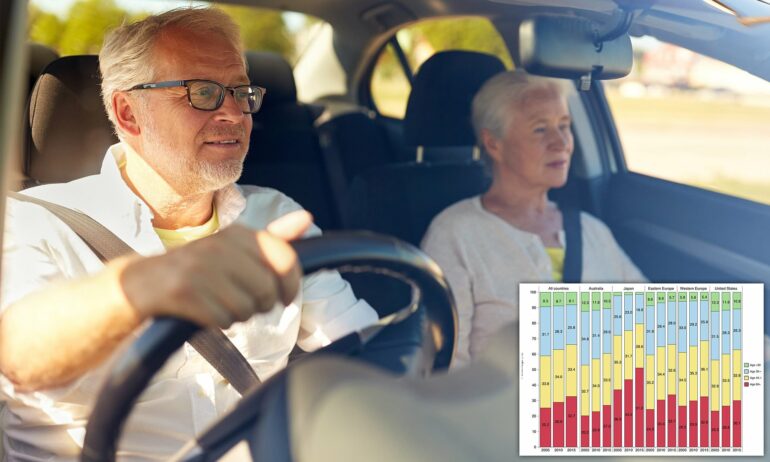Baby boomers have a big climate footprint. In 2005, people over 60 accounted for 25% of greenhouse gas emissions. In 2015, that number jumped to nearly 33%.
“Older people used to be thrifty. The generation that experienced World War II was careful about how they used resources. The ‘new elderly’ are different,” says Edgar Hertwich, an NTNU professor in the Industrial Ecology Programme.
An NTNU study surveyed greenhouse gas emissions by age in 2005, 2010 and 2015. The survey includes 27 EU countries, Norway, the United Kingdom, the U.S., Australia and Japan.
Big change in a short time
“The post-war ‘baby boomer’ generation are the new elderly. They have different consumption patterns than the ‘quiet generation’ that was born in the period 1928–1945. Today’s seniors spend more money on houses, energy consumption and food,” says Hertwich.
In 2005, the over-60 age group accounted for lower emissions than the 30–44 and 45–59 age groups. In 2015, seniors had surpassed the 30- to 44-year-old levels, and were at the same level as the 45- to 59-year-olds.
Heran Zheng, a postdoctoral fellow at NTNU, believes that there is good reason to assume that the 60-plus group has surpassed the 45–59 group since 2015 and is now at the top of the emissions ladder.
Message to politicians
The study shows that seniors are responsible for an increasing share of climate emissions in all 32 countries surveyed. Seniors in Japan stand out, accounting for over half of climate emissions.
Zheng says the most important message from this research is for politicians to be aware that the aging population is making it more difficult to reduce greenhouse gas emissions.
“The consumption habits of seniors are more rigid. For example, it would be an advantage if more people moved to smaller homes once the kids moved out,” he says. “Hopefully more senior-friendly housing communities, transport systems and infrastructure can be built.”
Global aging wave
The aging wave is sweeping the world, so as the new elderly increase their climate footprint, it’s bad news. In addition to the fact that the large age groups from the 1950s and 1960s are on their way into old age, life expectancy is increasing. The elderly population in the 32 countries in the NTNU study will double between 2019 and 2050.
More local emissions
In comparison with other age groups, emissions that the elderly account for tend to be more local. Younger age groups consume more imported goods, clothing, electronics and furniture, goods that lead to emissions in other countries.
“Income shrinks in retirement, but seniors in developed countries have accumulated value, primarily in housing. A lot of them have seen a large increase in the value of their property. The elderly are able to maintain their high consumption through their wealth. This happens especially in carbon-intensive areas like energy. An increasing proportion of this age group live alone. This isn’t the case in all countries, but it reflects the overall picture,” says Zheng, who is affiliated with NTNU’s Department of Energy and Process Engineering.
Norway is high on the list
If you look at annual emissions by the number of metric tons per person, the elderly in Australia and the U.S. come out worst with 21 metric tons in 2015, close to double the European average.
In Europe, Luxembourg seniors have the highest emissions with 19 metric tons. Great Britain, Norway, Finland and Ireland are also in the upper emission echelons.
Norwegians over the age of 60 have distinctly higher emissions (12 metric tons) than Swedes (7.4 metric tons) and Danes (10.2 metric tons). Elderly people in Romania, Lithuania, Hungary, Croatia and Estonia account for the fewest emissions per person.
Everyone emitting less
Although the distribution of emissions between the age groups has changed, all groups have reduced their emissions between 2005 and 2015. And the young are leading the lower trend. People under the age of 30 have cut their annual emissions by 3.7 metric tons during this period. The 30- to 44-year-olds reduced emissions by 2.7 metric tons and the 45- to 59-year-old group by 2.2 metric tons. People over the age of 60 had the smallest decline, only 1.5 metric tons.
More information:
Heran Zheng, et al, Ageing society in developed countries challenges carbon mitigation, Nature Climate Change (2022). DOI: 10.1038/s41558-022-01302-y
Provided by
Norwegian University of Science and Technology
Citation:
People over 60 are greenhouse gas emission ‘bad guys’ (2022, March 24)



